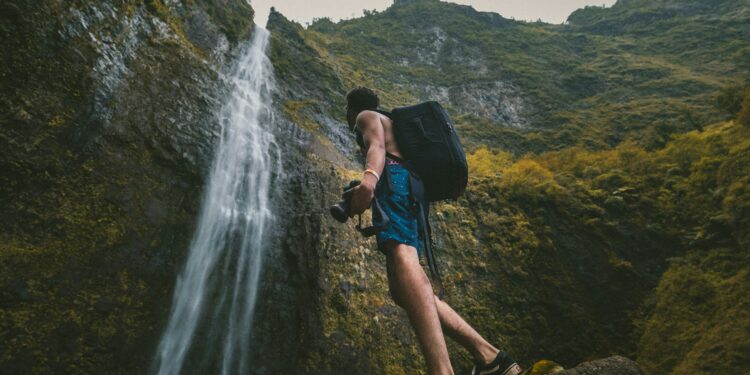20 Travel Photography Tips for Soulful Storytelling

Travel photography is more than just taking pictures on vacation; it’s about capturing the essence of a place, telling its stories, and preserving memories in a way that resonates with others. It’s a genre that combines the thrill of exploration with the art of visual storytelling.
Whether you’re a seasoned photographer or a casual snapper, travel photography offers a unique opportunity to connect with the world and share its beauty through your own lens.
This guide will provide you with essential tips and techniques to elevate your travel photography, from mastering composition to understanding ethical considerations and choosing the right gear.
The Art of Composition and Storytelling
Composition is the foundation of any compelling photograph, and in travel photography, it’s crucial for conveying the narrative of a place. Rather than simply pointing and shooting, consider how you arrange the elements within your frame to create visual interest and guide the viewer’s eye.
- Rule of Thirds: Imagine dividing your image into a 3×3 grid. Placing key elements along these lines or at their intersections often creates a more dynamic and balanced composition.
- Leading Lines: Use natural or man-made lines, such as roads, rivers, or fences, to draw the viewer’s attention to the main subject.
- Framing: Use elements like doorways, windows, or trees to frame your subject and provide context.
- Depth of Field: Control the sharpness of your image to emphasize certain elements and create a sense of depth.
- Perspective: Experiment with different angles and viewpoints to capture unique perspectives.
Beyond composition, storytelling is key to creating impactful travel photographs. Think about the story you want to tell. What is unique about this place? What are the people like? What emotions do you want to evoke? Capture details that convey the atmosphere, culture, and history of your destination.
Ethical Considerations in Travel Photography
As travel photographers, we have a responsibility to be mindful of the impact our work has on the places and people we photograph. Ethical considerations are paramount to ensure that we capture images in a way that is respectful, honest, and sustainable.
- Respect for Local Cultures: Before photographing people or cultural events, take the time to learn about local customs and traditions. Always ask for permission before taking someone’s picture, and be prepared to accept a “no” graciously.
- Avoid Exploitation: Be mindful of power dynamics and avoid taking photos that could be perceived as exploitative or demeaning.
- Environmental Responsibility: Respect the natural environment and avoid doing anything that could harm it. Stay on marked trails, avoid disturbing wildlife, and be mindful of your waste.
- Honest Representation: Strive to represent your subjects and destinations accurately and authentically. Avoid manipulating images in a way that misrepresents reality.
- Giving Back: Consider ways to give back to the communities you photograph, whether through donations, volunteering, or sharing your images in a way that benefits them.
Essential Gear for Phone Photography
While professional cameras offer more versatility, smartphones have become increasingly capable and are a convenient tool for travel photography. Here’s essential gear to enhance your phone photography:
- Smartphone with a Good Camera: Invest in a phone with a high-quality camera that offers features like a large sensor, good low-light performance, and manual controls.
- Portable Tripod: A small, lightweight tripod can help you stabilize your phone for sharper images, especially in low light or when using long exposures.
- External Lenses: Clip-on lenses, such as wide-angle, telephoto, and macro lenses, can expand your phone’s photographic capabilities.
- Storage: Ensure you have enough storage space on your phone or an external hard drive to store your photos.
- Power Bank: A portable power bank is essential for keeping your phone charged on long days of shooting.
- Cleaning Cloth: Keep your lens clean to avoid blurry or distorted images.
- Photo Editing Apps: Apps like Adobe Lightroom Mobile, Snapseed, or VSCO offer powerful editing tools for enhancing your photos on the go.
Must-Have Lenses for Travel Photography
For those using DSLR or mirrorless cameras, lenses are crucial for capturing diverse travel scenes. Here are some essential lenses:
- Wide-Angle Lens (16-35mm or similar): Ideal for capturing expansive landscapes, cityscapes, and architectural wonders.
- Standard Zoom Lens (24-70mm or similar): A versatile all-around lens for various subjects, including portraits, street photography, and general travel scenes.
- Telephoto Lens (70-200mm or similar): Perfect for capturing distant subjects, wildlife, and compressing perspective in landscapes.
- Prime Lens (35mm or 50mm): These lenses offer excellent image quality, a wide aperture for low-light shooting and shallow depth of field, and are great for street photography and portraits.
Travel Photography Settings and Tips
Mastering the following camera settings and techniques will significantly improve your travel photos:
- Aperture: Controls the amount of light entering the lens and affects the depth of field. Use a wide aperture (e.g., f/1.8, f/2.8) for shallow depth of field and a narrow aperture (e.g., f/8, f/11) for greater depth of field.
- Shutter Speed: Determines how long the camera’s sensor is exposed to light. Use a fast shutter speed to freeze motion and a slow shutter speed to create motion blur.
- ISO: Measures the camera sensor’s sensitivity to light. Use a low ISO (e.g., 100, 200) in bright conditions and a high ISO (e.g., 1600, 3200 or higher) in low light.
- Cropping: Improve composition and remove unwanted elements.
- Exposure Adjustment: Correct overall brightness.
- White Balance: Ensure accurate colors.
- Contrast and Saturation: Enhance the image’s vibrancy.
- HDR (High Dynamic Range): Combine multiple exposures to capture a wider range of tones.
- Long Exposures: Use slow shutter speeds to create motion blur and capture light trails.
- Focus Stacking: Combine multiple images with different focus points for maximum sharpness.
- Using Filters: Enhance your images with filters like ND (Neutral Density) or polarizing filters.
Tips for Shooting by Destination Type
Different destinations and subjects require different approaches. Here are some tips for specific scenarios:
- Landscapes: Use a wide-angle lens, a small aperture (f/8-f/11), and a tripod for sharp, expansive images. Shoot during the golden hours (sunrise and sunset) for the best light.
- Portraits: Use a medium telephoto lens (e.g., 85mm) or a prime lens (e.g., 50mm) with a wide aperture (f/1.8-f/2.8) to create a shallow depth of field and isolate your subject.
- Street Photography: Use a small, discreet camera and a fast shutter speed to capture candid moments. A 35mm or 50mm lens is ideal.
- Architecture: Use a wide-angle lens or a tilt-shift lens to correct perspective distortion. Pay attention to lines, shapes, and patterns.
- Wildlife: Use a telephoto lens to capture animals from a safe distance. A fast shutter speed is essential to freeze motion.
Practical Travel Photography Tips
- Planning: Research your destination, identify key landmarks and photo opportunities, and plan your shooting schedule around the best light.
- Packing: Pack light but bring essential gear. Consider a versatile zoom lens, a tripod, and plenty of storage. Protect your gear from the elements.
- Safety: Be aware of your surroundings, especially in crowded or unfamiliar places. Keep your gear secure and avoid displaying expensive equipment unnecessarily.
- Local Interaction: Connect with locals, learn a few basic phrases, and be respectful of their culture. This will not only enrich your experience but also lead to more meaningful photographs.
Capture and Connect with Your Stories
Travel photography offers a deeply fulfilling way to document the world’s beauty as you experience it and share it with others. By mastering composition, respecting ethical considerations, and employing the right gear and techniques, you can craft images that are both visually stunning and emotionally resonant.
As you embark on your photographic journey, remember to share your work to connect with others and inspire them to explore. Follow the work of other travel photographers to expand your knowledge and discover new perspectives. Most importantly, experiment with different approaches to develop your unique style and voice.
Next Read: The Best Gaming Phone of 2025: Top Picks at Every Price Point







